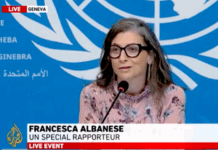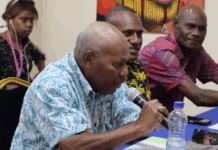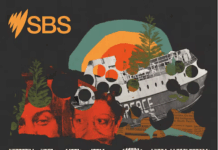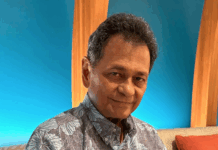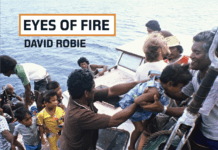
COMMENT: By Michael Field of The Pacific Newsroom
It has been more than three months since elections in Sāmoa produced an election result that would change a government, and, eventually, bring to office Prime Minister Fiame Naomi Mata’afu.
What is remarkable about this is not so much the change, but the forbearance and patience of the Sāmoan people; there has been no violence of any kind.
It would be challenging to think of other countries in such situations where people waited quietly, peacefully.
But it would be of no surprise to any student of Sāmoan history – and a particular quote.
The first is in 1887 when the Imperial Germans were trying to capture Malietoa Laupepa.
German ships were bombarding villages in a bid to catch him. He was in the jungle of ‘Upolu. A letter was sent by the Germans Malietoa telling him that if he did not surrender, great sorrows must befall his country.
He surrendered, fearing the bombardment of villages.
‘Do not let us weep’
Malietoa’s tulāfale Lauaki Namulau’ulu Mamoe, said there was no shame in surrender: “Do not let us weep. We have no cause for shame. We do not yield to Tamasese, but to the invincible strangers.”
Malietoa responded with a ringing farewell: “To all Sāmoa: On account of my great love to my country and my great affection to all Sāmoa, this is the reason that I deliver up my body to the German government.
“That government may do as they wish to me. The reason for this is, because I do not desire that the blood of Sāmoa shall be spilled for me again. But I do not know what is my offence which has caused their anger to me and to my country.’”
He named his provinces: “Tuamasaga, farewell! Manono and family, farewell! So, also, Salafai, Tutuila, Aana, and Atua, farewell! If we do not again see one another in this world, pray that we may be again together above.”
Malietoa was taken by German gunboat to Sydney and onto the German colony in Cameroon in Africa.
The other event, of course, where revenge and counter-attack was expected was 1929s Aso Pogisa in which the Mau had been attacked by New Zealand police on Beach Road, killing a number, including Tupua Tamasese Lealofi III.
Mortally wounded
He was mortally wounded. He was taken to hospital for surgery.
After surgery, he spoke with those gathered around him: “Sāmoa filemu pea, ma si o’u toto ne’i ta’uvalea, a ia aoga lo’u ola mo lenei mea” (‘My blood has been split for Sāmoa. I am proud to give it. Do not dream of avenging it, as it was spilt in maintaining peace. If I die, peace must be maintained at any price.’)
He died soon after.
Resisting violence, keeping peace, plainly is Sāmoa’s heritage and this year we have seen a variation on it play out.
Michael Field is a co-publisher of The Pacific Newsroom. This article is republished with permission.



